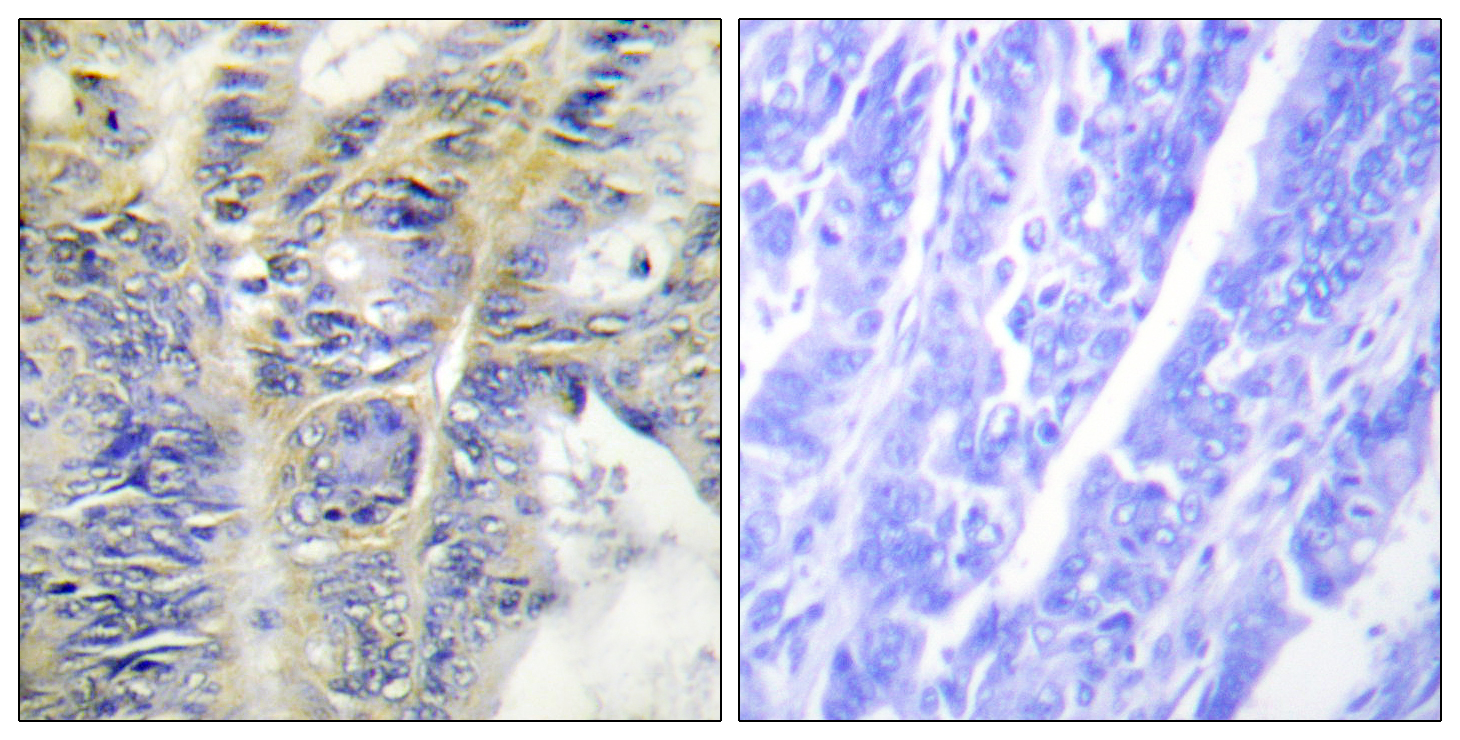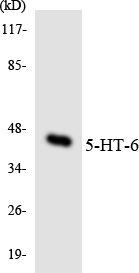COL4A5 Polyclonal Antibody
- Catalog No.:YT1028
- Applications:IHC;IF;WB;ELISA
- Reactivity:Human;Mouse
- Target:
- COL4A5
- Fields:
- >>PI3K-Akt signaling pathway;>>Focal adhesion;>>ECM-receptor interaction;>>Relaxin signaling pathway;>>AGE-RAGE signaling pathway in diabetic complications;>>Protein digestion and absorption;>>Amoebiasis;>>Human papillomavirus infection;>>Pathways in cancer;>>Small cell lung cancer
- Gene Name:
- COL4A5
- Protein Name:
- Collagen alpha-5(IV) chain
- Human Gene Id:
- 1287
- Human Swiss Prot No:
- P29400
- Immunogen:
- The antiserum was produced against synthesized peptide derived from human Collagen IV alpha5. AA range:21-70
- Specificity:
- COL4A5 Polyclonal Antibody detects endogenous levels of COL4A5 protein.
- Formulation:
- Liquid in PBS containing 50% glycerol, 0.5% BSA and 0.02% sodium azide.
- Source:
- Polyclonal, Rabbit,IgG
- Dilution:
- WB 1:500-2000 IHC 1:100 - 1:300. IF 1:200 - 1:1000. ELISA: 1:10000. Not yet tested in other applications.
- Purification:
- The antibody was affinity-purified from rabbit antiserum by affinity-chromatography using epitope-specific immunogen.
- Concentration:
- 1 mg/ml
- Storage Stability:
- -15°C to -25°C/1 year(Do not lower than -25°C)
- Other Name:
- COL4A5;Collagen alpha-5(IV) chain
- Observed Band(KD):
- 160kD
- Background:
- This gene encodes one of the six subunits of type IV collagen, the major structural component of basement membranes. Mutations in this gene are associated with X-linked Alport syndrome, also known as hereditary nephritis. Like the other members of the type IV collagen gene family, this gene is organized in a head-to-head conformation with another type IV collagen gene so that each gene pair shares a common promoter. Alternatively spliced transcript variants have been identified for this gene. [provided by RefSeq, Aug 2010],
- Function:
- disease:Defects in COL4A5 are the cause of Alport syndrome X-linked (APSX) [MIM:301050]. APSX is characterized by progressive glomerulonephritis, renal failure, sensorineural deafness, specific eye abnormalities (lenticonous and macular flecks), and glomerular basement membrane defects. The disorder shows considerable heterogeneity in that families differ in the age of end-stage renal disease and the occurrence of deafness.,disease:Deletions covering the N-terminal regions of COL4A5 and COL4A6, which are localized in a head-to-head manner, are the cause of diffuse leiomyomatosis with Alport syndrome (DL-ATS) [MIM:308940]; also known as esophageal and vulval leiomyomatosis with nephropathy or Alport syndrome and diffuse leiomyomatosis (ATS-DL). DL-ATS is the combination of AS and diffuse leiomyomatosis (DL). DL is a tumorous process involving smooth muscle cells, mostly of the esophagus,
- Subcellular Location:
- Secreted, extracellular space, extracellular matrix, basement membrane.
- Expression:
- Isoform 2 is found in kidney.
- June 19-2018
- WESTERN IMMUNOBLOTTING PROTOCOL
- June 19-2018
- IMMUNOHISTOCHEMISTRY-PARAFFIN PROTOCOL
- June 19-2018
- IMMUNOFLUORESCENCE PROTOCOL
- September 08-2020
- FLOW-CYTOMEYRT-PROTOCOL
- May 20-2022
- Cell-Based ELISA│解您多样本WB检测之困扰
- July 13-2018
- CELL-BASED-ELISA-PROTOCOL-FOR-ACETYL-PROTEIN
- July 13-2018
- CELL-BASED-ELISA-PROTOCOL-FOR-PHOSPHO-PROTEIN
- July 13-2018
- Antibody-FAQs
- Products Images

- Immunofluorescence analysis of HeLa cells, using Collagen IV alpha5 Antibody. The picture on the right is blocked with the synthesized peptide.

- Immunohistochemistry analysis of paraffin-embedded human colon carcinoma tissue, using Collagen IV alpha5 Antibody. The picture on the right is blocked with the synthesized peptide.

- Western blot analysis of the lysates from COLO205 cells using 5-HT-6 antibody.



